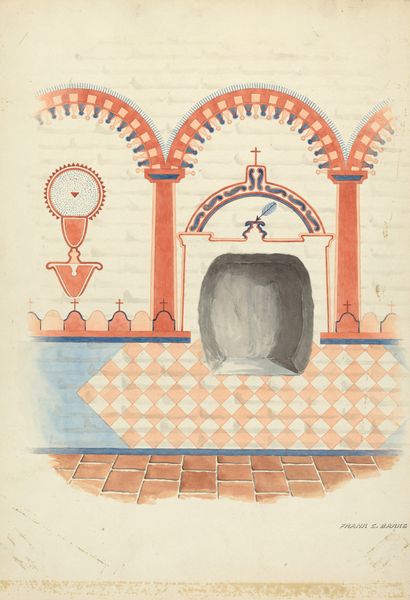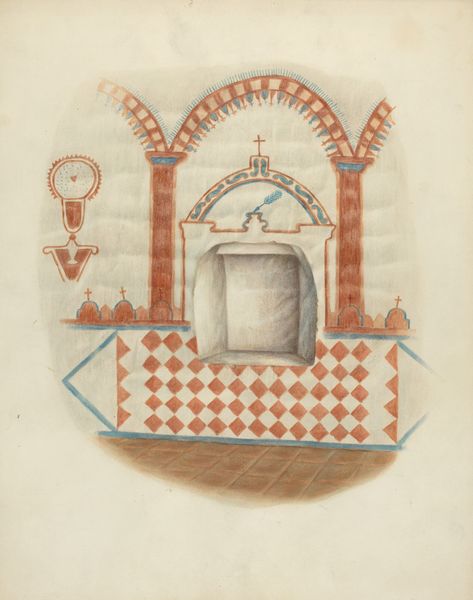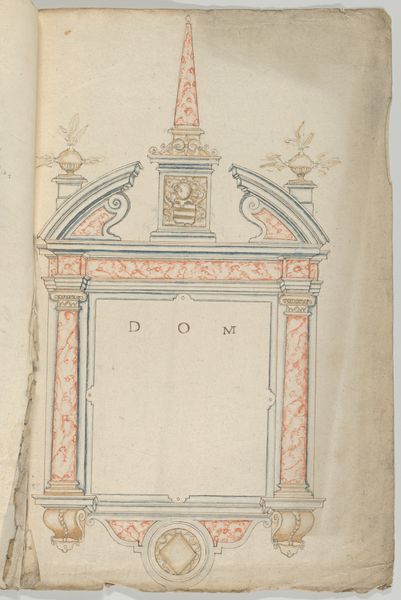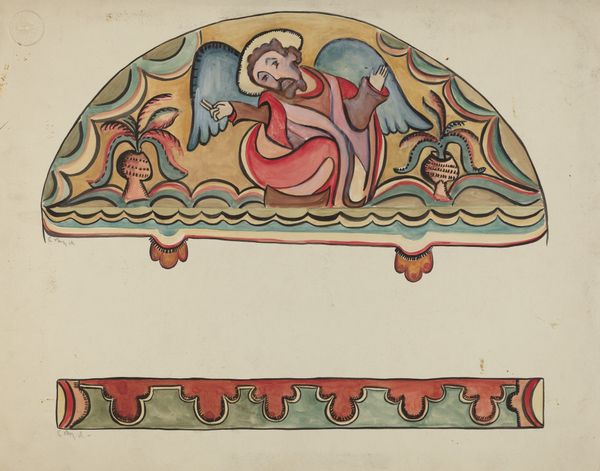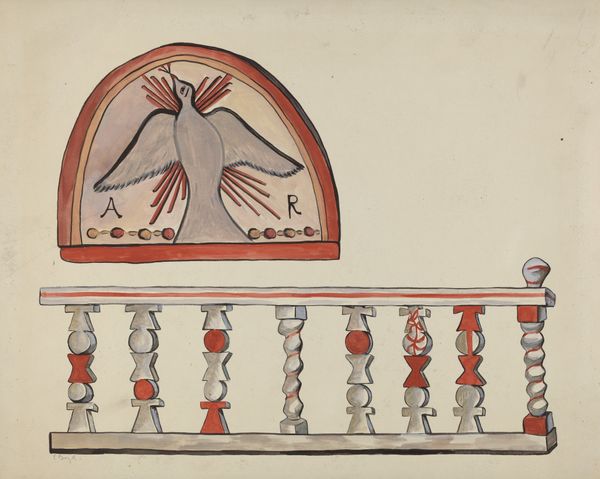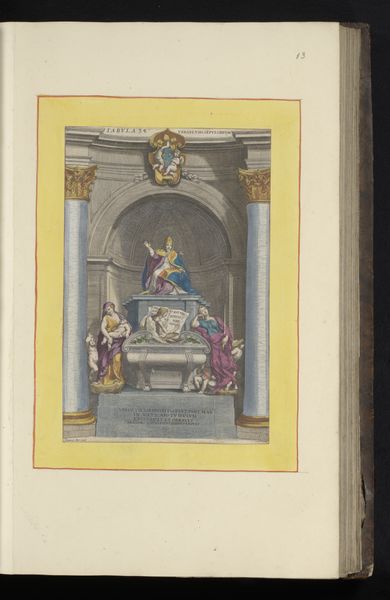
drawing
#
drawing
#
aged paper
#
toned paper
#
light pencil work
#
water colours
#
personal sketchbook
#
coloured pencil
#
watercolour bleed
#
watercolour illustration
#
sketchbook art
#
watercolor
Dimensions: overall: 35.6 x 24.1 cm (14 x 9 1/2 in.)
Copyright: National Gallery of Art: CC0 1.0
Editor: This is Frank C. Barks's "Wall Painting and Baptismal Niche," made around 1938, using watercolor and colored pencil. It feels so peaceful, almost like a memory. What do you see in this piece? Curator: This drawing provides a glimpse into the aesthetic ideologies present in religious spaces of the period. We must consider how this artwork engages with the visual rhetoric of power, faith, and cultural identity. Barks documents, but how does his position, likely as an outsider, influence his rendition of this sacred space? Editor: Outsider in what way? Do you mean religiously, or…ethnically? Curator: Both could be true! These early-20th century artistic renderings often omit local participation, which is telling. Where are the people? The choice to portray a pristine, empty niche reinforces a specific colonial gaze. Editor: So, the lack of people almost speaks louder than if they were there? It's a loaded absence. Curator: Precisely. The emptiness highlights not only the physical space but also the sociopolitical void of marginalized voices within institutional religious narratives. Even the carefully rendered details—the arches, the baptismal font—become symbols of cultural appropriation when viewed through this lens. Who controls the narrative? Editor: That makes you wonder about Barks’s intentions in creating this illustration. It’s more complicated than I first thought! Curator: Indeed! Thinking critically allows us to ask the vital, albeit uncomfortable, questions that expand our understanding of this time. Art challenges our assumptions. Editor: Thanks; it’s interesting to see how art history connects to all those bigger discussions about representation and who gets to tell which story.
Comments
No comments
Be the first to comment and join the conversation on the ultimate creative platform.
